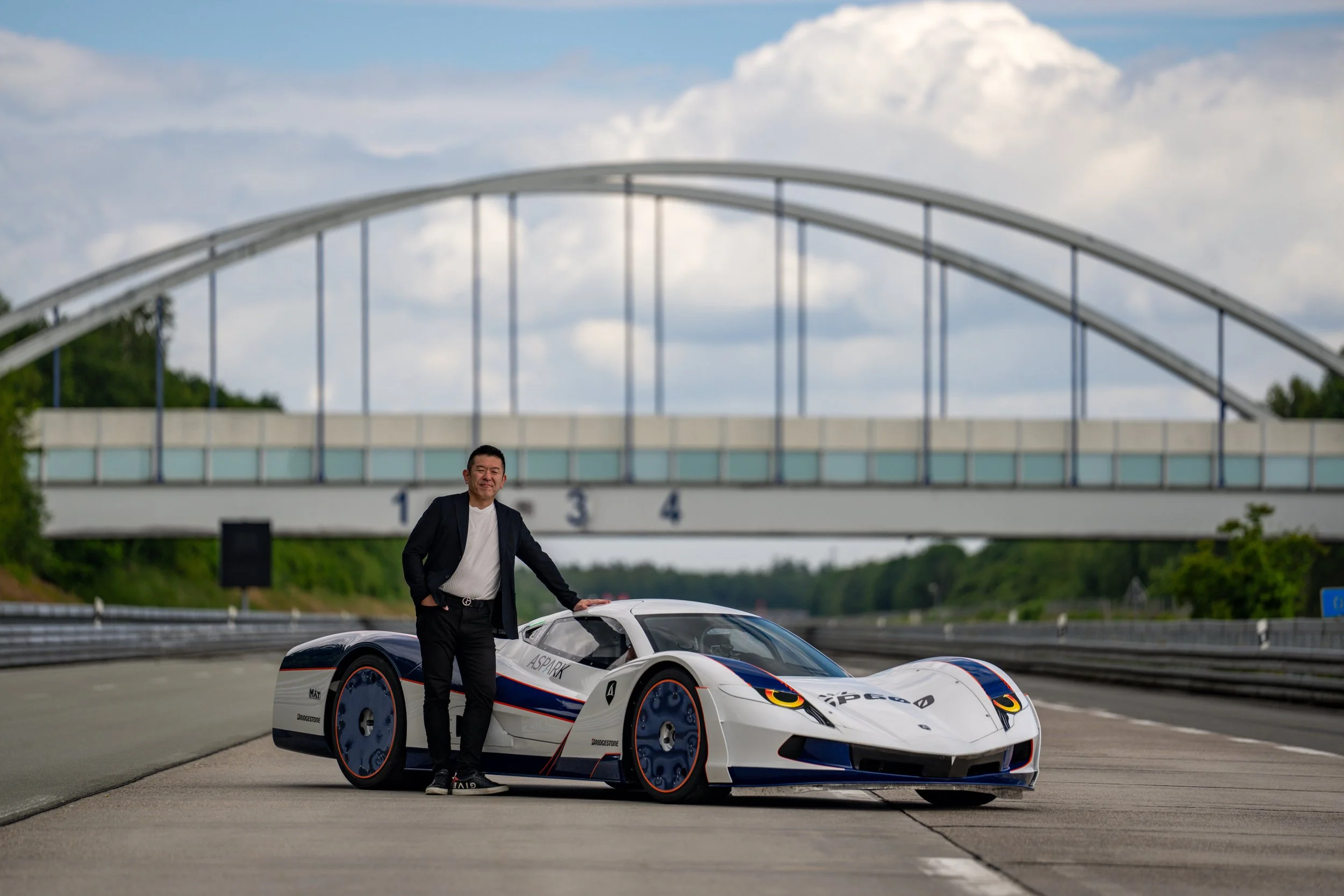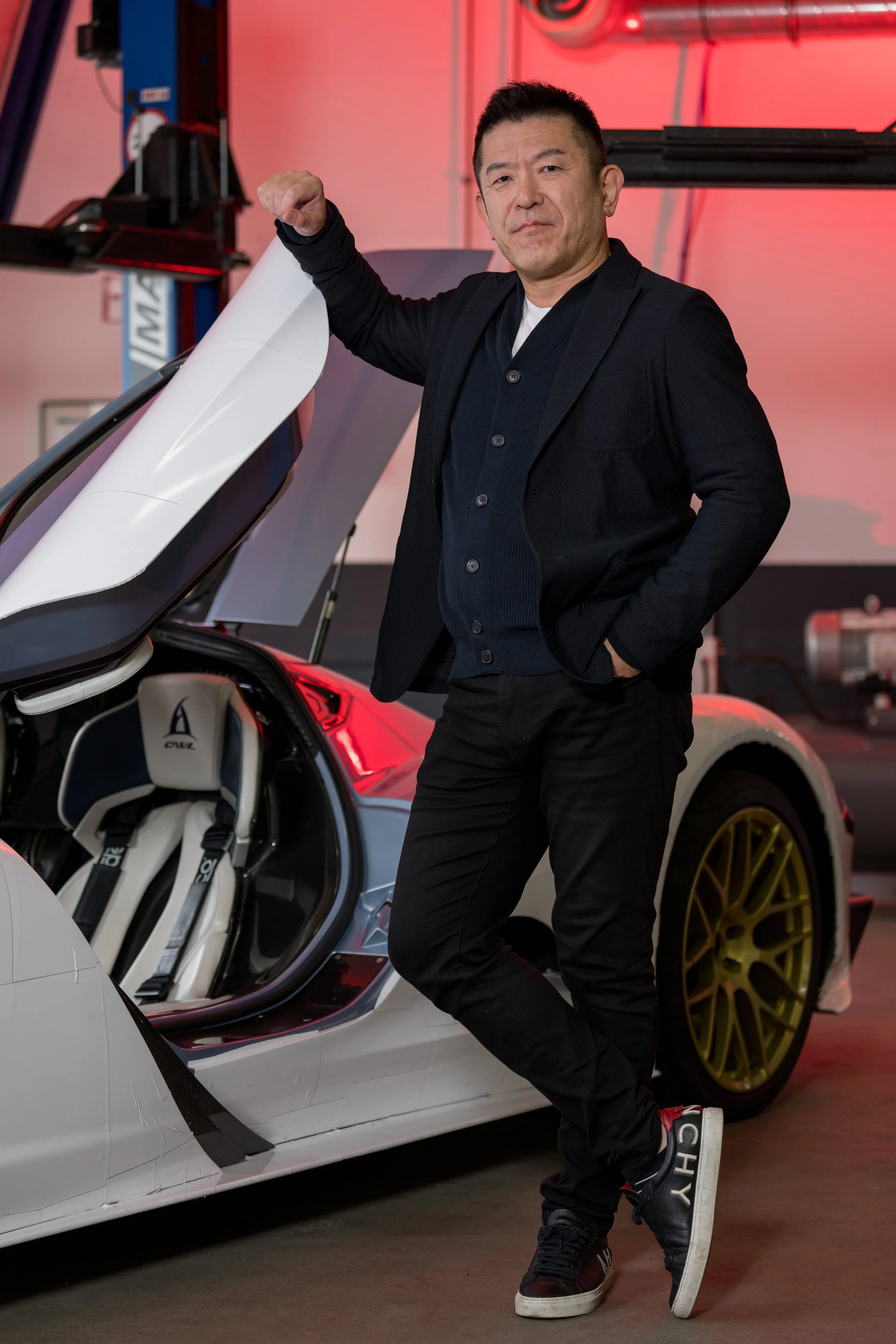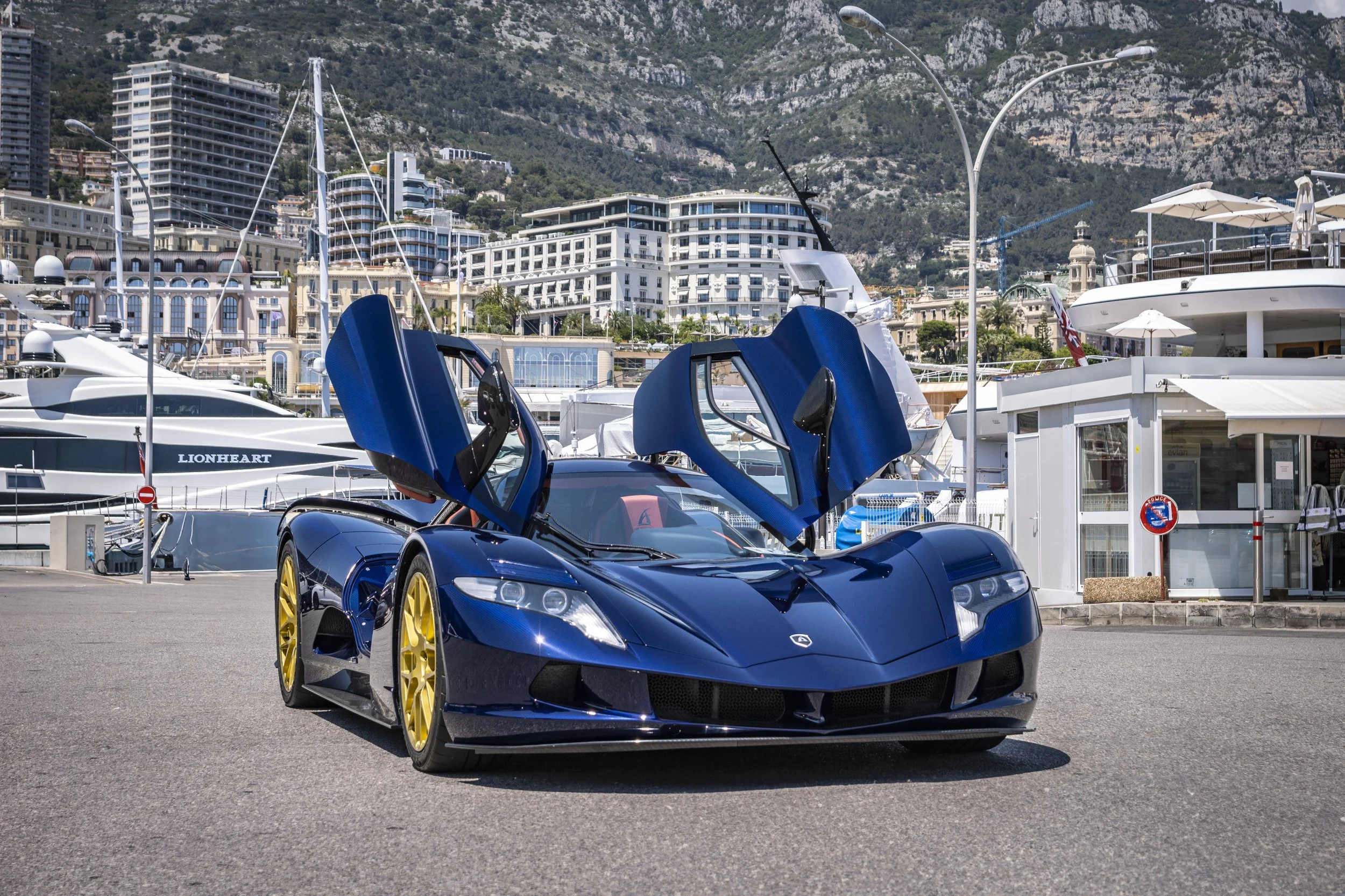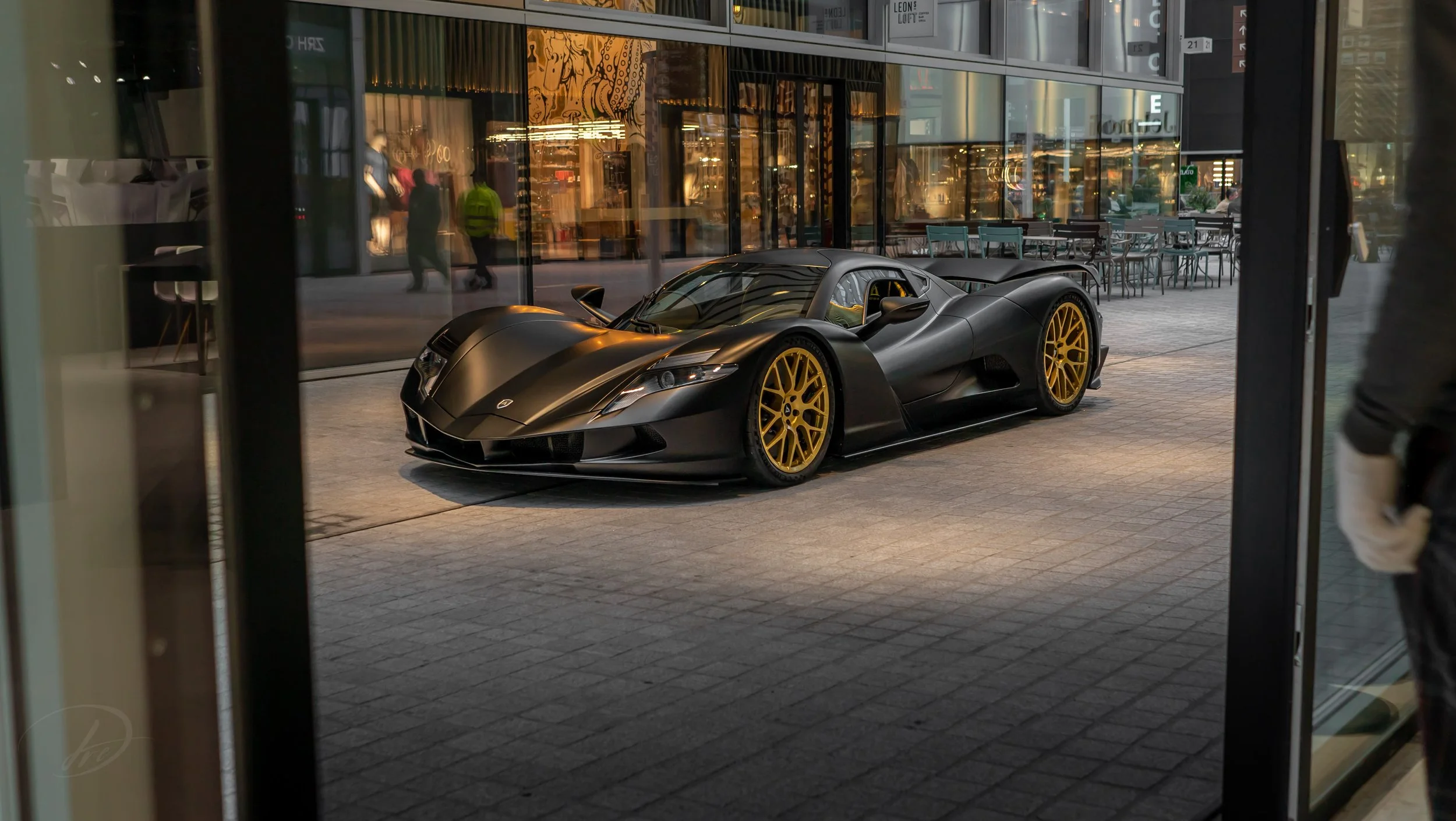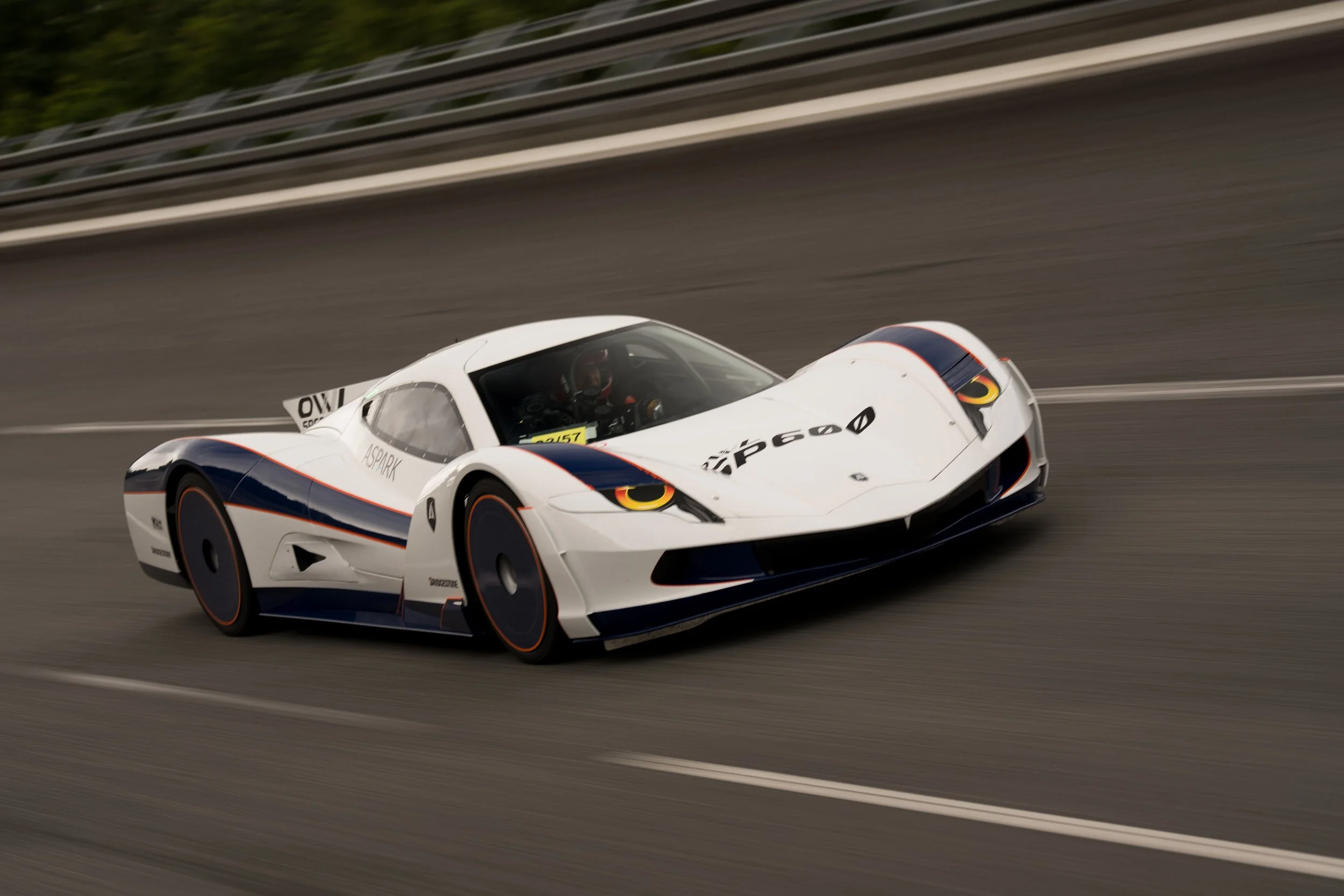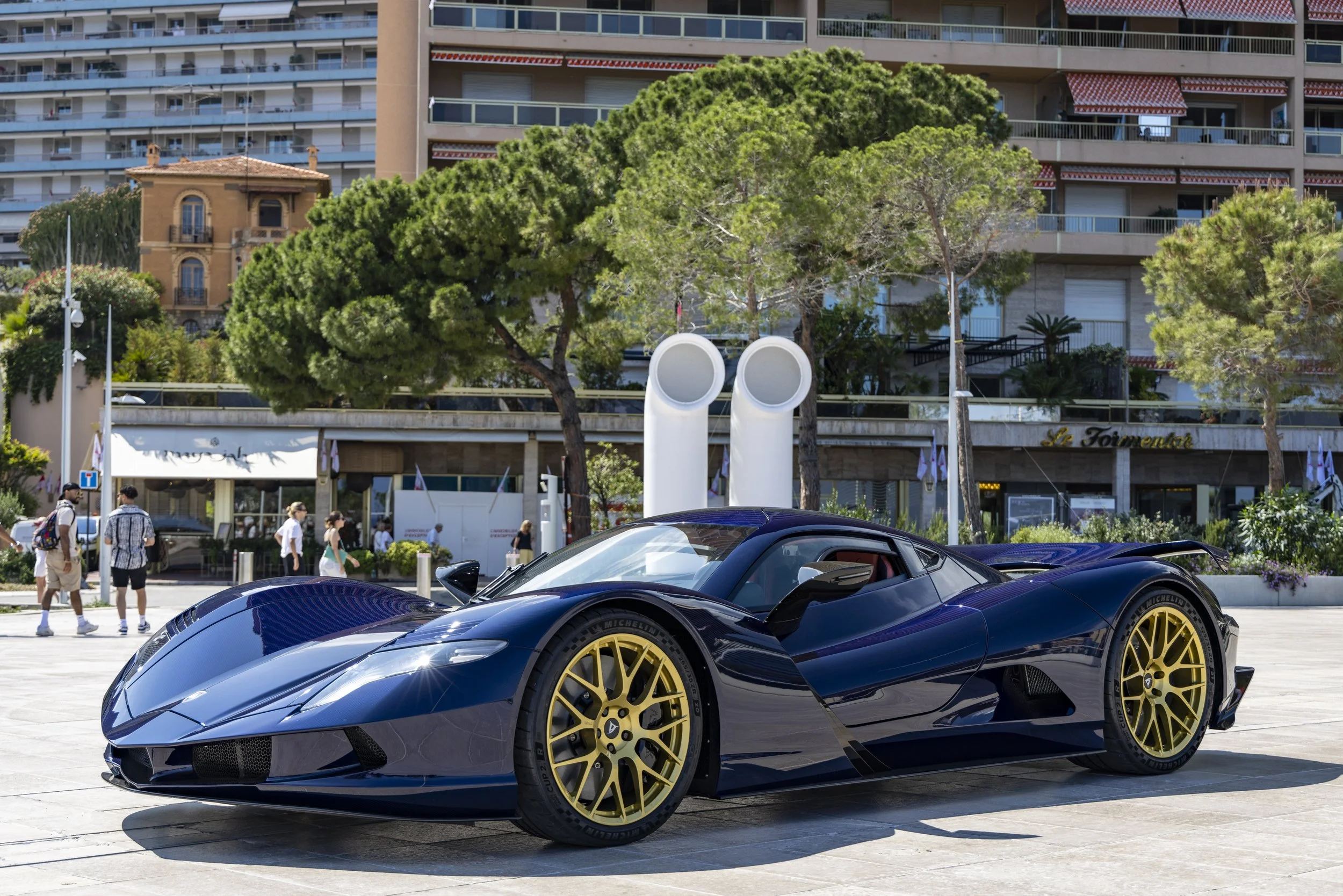Wir wollten das Schnellste und Schönste bauen“ – Exklusivinterview mit Aspark-Gründer Masanori Yoshida über den elektrischen Hypercar-Traum Owl
Einleitung:
Aspark Owl – Japans elektrischer Hypercar-Traum auf vier Rädern
In der Welt der Hypercars sind es oft die ikonischen Namen aus Europa oder Nordamerika, die die Schlagzeilen dominieren. Doch in den letzten Jahren ist ein stiller, aber revolutionärer Herausforderer aus dem Osten ins globale Rampenlicht gerückt: Aspark. Gegründet 2005 in Osaka, Japan, etablierte sich Aspark zunächst als spezialisiertes Ingenieurunternehmen mit Fokus auf Branchen wie Automobil, Elektronik und Robotik. Mit einem tief verwurzelten Bekenntnis zu Präzision und technischer Exzellenz wurde das Unternehmen schnell zu einem angesehenen Innovationspartner in einer Vielzahl von Industrien.
Doch unter der mutigen Führung von Chairman Masanori Yoshida beschloss Aspark, weit über seine beratenden Wurzeln hinauszugehen. Mit der Vision, neu zu definieren, was Elektromobilität leisten kann, begab sich das Team auf eine der ambitioniertesten Reisen in der Welt der Hochleistung: die Entwicklung eines vollelektrischen Hypercars, das einen neuen Maßstab für Geschwindigkeit, Design und Exklusivität setzen sollte.
Das Ergebnis ist der Aspark Owl – mehr als ein Fahrzeug, er ist die Verwirklichung eines Traums, der über ein Jahrzehnt benötigte, um zur Perfektion gebracht zu werden. Als der erste Prototyp 2017 auf dem Genfer Autosalon enthüllt wurde, wurde er sowohl mit Neugier als auch mit Skepsis betrachtet. Doch statt zurückzuweichen, verdoppelte Aspark die Entwicklung, technische Verfeinerung und technologische Präzision – entschlossen, zu beweisen, was möglich ist, wenn Leidenschaft auf Ausdauer trifft.
Führung & Vision: Der Mann hinter dem Aspark Owl
Mit einer atemberaubenden Beschleunigung von 0 auf 100 km/h in unter 2 Sekunden, einer ultraleichten Karosserie aus Kohlefaser und einer streng limitierten Produktionsmenge steht der Owl heute als eines der fortschrittlichsten vollelektrischen Hypercars, die je gebaut wurden. Er ist ein Zeugnis für Japans wachsenden Einfluss nicht nur im Bereich nachhaltiger Mobilität, sondern im besonders exklusiven Segment der Hochleistungsinnovation.
Wir fühlen uns geehrt, dass Chairman Masanori Yoshida sich die Zeit genommen hat, in diesem exklusiven Interview seine Einblicke zu teilen – und uns einen seltenen Einblick in die Geschichte hinter dem Owl, die überstandenen Herausforderungen und seine persönliche Sicht auf die Zukunft der Hypercar-Branche zu gewähren.
Kurzbiografie: Masanori Yoshida
Gründer & Chairman, Aspark Co., Ltd.
Masanori Yoshida ist ein japanischer Unternehmer und visionärer Ingenieur, bekannt als Gründer und aktueller Chairman von Aspark Co., Ltd.
Bevor er sich in die Welt der Hochleistungsautomobile wagte, führte Yoshida Aspark durch fast zwei Jahrzehnte des Wachstums in Bereichen wie Robotik, industrielle Systeme und elektrische Lösungen. Sein Führungsstil ist geprägt von mutigen Entscheidungen, interdisziplinärer Neugier und der Bereitschaft, etablierte Normen in Technik und Wirtschaft herauszufordern.
Yoshidas Einstieg in das Hypercar-Segment war keine spontane Entscheidung, sondern das Ergebnis langfristigen strategischen Denkens und einer tief verwurzelten Überzeugung vom Potenzial der Elektromobilität.
Heute leitet Yoshida Aspark mit einer klaren globalen Perspektive, verbindet japanische Werte wie Raffinesse und Handwerkskunst mit einem disruptiven Innovationsansatz. Seine Arbeit hat ihm internationale Anerkennung eingebracht und ihn zu einer der faszinierendsten Persönlichkeiten in der sich entwickelnden Welt der elektrischen Supersportwagen gemacht.
Interviewfragen an Aspark Owl und seinen Gründer, Herrn Yoshida – Die Seele eines elektrischen Hypercars entdecken
Oliver:
Herr Yoshida, als Sie Aspark Owl zum ersten Mal vor Augen hatten – dachten Sie, dass er eines Tages ein globales Symbol für elektrische Hypercar-Innovation werden würde? Wie würden Sie Ihre ursprüngliche Vision damals beschreiben?
Herr Yoshida:
Alles beginnt mit: „Das wäre spannend“ – und die Welt ist davon begeistert. Dieser eine Satz war der Auslöser für alles bei uns. Was uns bei Aspark antreibt, ist der Glaube daran, neuen Wert zu schaffen, der noch nicht existiert. Wir bauen nicht einfach Hypercars – wir schaffen Erlebnisse, die es vorher nicht gab. Unser ultimatives Ziel ist es, etwas zu liefern, das fasziniert, inspiriert und begeistert – etwas, das die Menschen wirklich bewegt.
Oliver:
Japan ist bekannt für seine Präzision, Subtilität und technische Exzellenz. Wie zeigt sich diese Philosophie in jedem Detail des Owl – vom Design bis zur Leistung?
Herr Yoshida:
Das Design des Owl ist unverkennbar futuristisch, und doch trägt es eine raffinierte, fast feminine Eleganz in seiner fließenden, skulpturalen Form. Seine schlanke Silhouette vermittelt ein Gefühl von Luxus und Anmut – aber unter dieser Schönheit liegt außergewöhnliche Stärke und atemberaubende Kraft. Dieser Kontrast ist es, der den Owl zu einem unvergleichlichen Hypercar in der heutigen Automobilwelt macht. Ein weiteres zentrales Merkmal ist seine extrem niedrige Fahrhöhe, die nicht nur seine visuelle Anziehungskraft erhöht, sondern auch die Aerodynamik optimiert. Die aktiven aerodynamischen Elemente, die sich während der Fahrt verändern, vereinen Funktion und Form – und liefern sowohl hohe Leistung als auch visuelle Raffinesse.
Oliver:
Viele Experten sehen den Owl als Meilenstein im Bereich elektrischer Hochleistungsfahrzeuge. Gab es während der Entwicklung Momente, in denen Sie dachten: „Das könnte unmöglich sein“ – und was hat Sie motiviert, weiterzumachen?
Herr Yoshida:
Nie habe ich gedacht: „Das ist unmöglich.“ Von Anfang an war unsere Denkweise klar: Wir wollten etwas schaffen, das die Welt noch nie gesehen hat. Die Idee des „Unmöglichen“ existiert in unserem Denken nicht – weder in der Vergangenheit noch heute. Jeder Tag war ein Zyklus von Versuch und Irrtum. Es lief selten reibungslos. Aber wir ließen uns nie entmutigen – wir fragten uns einfach immer: „Was ist der nächste Schritt, um es zu schaffen?“ Für uns ging es nie darum, ob wir es könnten, sondern ob wir es tun würden. Diese Denkweise hat es uns ermöglicht, den Owl zum Leben zu erwecken.
Oliver:
Von 0 auf 100 km/h in unter zwei Sekunden zu beschleunigen ist atemberaubend. Was waren die größten technischen Herausforderungen, um das zu erreichen, und was war der Schlüsselfaktor?
Herr Yoshida:
Die Entwicklung des OWL-Projekts begann 2014 in Japan – zu einer Zeit, in der es als nahezu unmöglich galt, mit einem elektrischen Antrieb echte Hypercar-Leistung zu erreichen. Aber von Anfang an wurden wir von einer zentralen Philosophie geleitet: „Neuen Wert schaffen, der noch nicht existiert.“ Geführt von diesem Glauben arbeiteten wir uns durch zahllose Versuche und strenge Tests. Nachdem die frühe Entwicklungsphase in Japan abgeschlossen war, verlegten wir das Projekt nach Italien, um das Fahrzeug zu einem straßenzugelassenen Serienmodell weiterzuentwickeln. Der Owl wurde schließlich als straßenzugelassenes, leistungsstarkes Elektro-Hypercar realisiert. Heute beschleunigt er von 0 auf 100 km/h in nur 1,78 Sekunden (0–60 mph in 1,72 Sekunden). Wir glauben, was diese beispiellose Herausforderung möglich gemacht hat, war unser unerschütterliches Engagement für diese ursprüngliche Philosophie.
Oliver:
Das Design des Owl wirkt futuristisch, fast wie aus der Science-Fiction. War es eine bewusste Entscheidung, sich visuell von traditionellen Supersportwagen abzuheben?
Herr Yoshida:
Das war absolut beabsichtigt – von Anfang an. Aspark begann ursprünglich als Ingenieur-Dienstleister. Als wir beschlossen, ein neues internes Projekt zu starten, sagte unser CEO, Herr Yoshida, mutig: „Wenn wir das tun, dann zielen wir auf das Beste der Welt. Lasst uns das schnellste und coolste Auto der Welt bauen.“
Wir wollten nicht etwas, das einfach nur wie ein typischer Supersportwagen aussieht. Wir wollten ein Design, das die Leute innehalten lässt und denken lässt: „So etwas habe ich noch nie gesehen!“ – im besten Sinne. Die auffällige Präsenz des Owl – seine andereweltliche Silhouette – war von Tag eins an eine bewusste Entscheidung.
Oliver:
Wie bereit sind Ihrer Meinung nach Hypercar-Enthusiasten, vollständig elektrische Antriebe zu akzeptieren – und wie begegnet Aspark dem mentalen Wandel bei Sammlern und Puristen?
Herr Yoshida:
Viele Hypercar-Enthusiasten empfinden Klang und Vibration von Verbrennungsmotoren als unglaublich faszinierend, daher wird der Übergang zu vollelektrischen Antrieben etwas Zeit brauchen.
Aber mit Modellen wie dem Aspark Owl – der atemberaubende Beschleunigung und auffälliges Design bietet – glauben wir, dass es absolut möglich ist, die wahre Aufregung von EV-Hypercars zu vermitteln.
Um die breite Akzeptanz zu beschleunigen, geht es nicht nur um rohe Leistung – emotionale Anziehungskraft durch Design und Fahrerlebnis wird entscheidend sein.
Oliver:
Der Owl wird in stark limitierter Stückzahl produziert. Was war der Grund dafür – Exklusivität, technische Komplexität oder eine strategische Ausrichtung auf Kenner und Sammler?
Herr Yoshida:
Die Produktion des Owl ist auf nur 50 Exemplare begrenzt – und das ist ganz bewusst so. Anstatt Elektroautos für den Massenmarkt zu bauen, haben wir uns entschieden, eine kleine Anzahl leistungsstarker elektrischer Hypercars zu produzieren. Unser Ziel ist es, jedem Kunden ein wirklich besonderes Erlebnis zu bieten. Der Aspark Owl geht es nicht um Masse – es geht darum, unvergessliche Momente zu schaffen, mit jedem einzelnen außergewöhnlichen Fahrzeug.
Oliver:
Was war das Feedback Ihrer ersten Kunden – in Bezug auf das Fahrerlebnis und die emotionale Verbindung mit einem so einzigartigen Fahrzeug?
Herr Yoshida:
Was den Aspark Owl wirklich besonders macht, ist seine unglaubliche Beschleunigung, seine ultraniedrige Bauhöhe von nur einem Meter und eine enorme Leistung von 1.953 PS. Diese Kombination erzeugt ein Maß an Stabilität, das sich anfühlt, als sei das Auto mit dem Boden verschmolzen – und bietet ein Fahrerlebnis, das es so noch nie gab. Wenn man im Cockpit sitzt, vermittelt die abgesenkte Sitzposition sofort das Gefühl: „Das ist kein gewöhnliches Auto.“ Natürlich haben wir ihn straßentauglich gemacht, mit mehreren Fahrmodi für verschiedene Situationen. Im Boost-Modus schafft der Owl die Beschleunigung von 0 auf 100 km/h in nur 1,78 Sekunden – und gehört damit zu den am schnellsten beschleunigenden Fahrzeugen der Welt.
Sein aktiver Heckflügel und die Doppelquerlenker-Aufhängung sehen nicht nur beeindruckend aus – sie ermöglichen auch ein präzises, sicheres Handling, selbst in engen Kurven. All diese Elemente machen den Owl zu mehr als nur einem „EV-Supersportwagen“. Er stellt einen neuen Standard für elektrische Hypercars dar. Diejenigen, die ihn gefahren haben, sagen oft dasselbe: „Das ist nicht einfach Fortbewegung. Es ist ein einmaliges Erlebnis – etwas, das dem Alltag einen Hauch von Außergewöhnlichem verleiht.“
Oliver:
Gibt es bereits Überlegungen oder Pläne für ein zukünftiges Modell von Aspark – vielleicht ein vollelektrisches GT oder ein Hybrid-Hypercar-Konzept?
Herr Yoshida:
Wir haben den Owl nie als Einzelstück gesehen. Tatsächlich arbeiten wir bereits an einem zweiten und dritten Modell. Am 8. Juni 2024 haben wir den Aspark Owl SP600 vorgestellt, einen neuen Prototyp in der Owl-Serie, der mit noch größerem Fokus auf Geschwindigkeit entwickelt wurde. Er erregte weltweites Aufsehen, indem er eine Höchstgeschwindigkeit von 438,7 km/h erreichte.
Für uns geht es bei zukünftiger Entwicklung nicht nur um Innovation – sondern auch darum, unseren Kunden langfristige Sicherheit und Vertrauen zu geben. Anstatt Massenproduktion zu betreiben, besteht unsere Vision bei Aspark darin, ultra-limitierte, hochwertige Fahrzeuge zu bauen, die einzigartigen Wert und ein Gefühl der Aufregung bieten. Wir bauen nicht einfach Autos; wir erschaffen mutige neue Erlebnisse. Mit allem, was wir bisher gelernt haben, werden wir weiterhin Grenzen verschieben und Produkte schaffen, die echtes Staunen und Vorfreude auslösen.
Oliver:
Glauben Sie, dass die Zukunft des Hypercar-Segments vollständig elektrisch sein wird – oder wird es weiterhin Raum für ikonische Verbrennungsmotoren geben?
Herr Yoshida:
Es wird immer eine Gruppe von Enthusiasten geben, die sich vom Klang und Geruch von Verbrennungs-Hypercars angezogen fühlen, daher glauben wir nicht, dass die Umstellung auf vollelektrisch absolut sein wird.
Aber angesichts des Tempos des technologischen Fortschritts und zunehmend strenger Umweltauflagen sehen wir die Branche größtenteils in Richtung elektrischer Antriebe gehen.
Bei Aspark wollen wir an der Spitze dieses Wandels stehen – und unsere Mission ist es zu beweisen, dass elektrisch immer noch die Seele bewegen kann.
Wir glauben, dass Leistung und Emotion im Zeitalter der Elektrifizierung nicht geopfert werden müssen.
Oliver:
Viele unserer Leser interessieren sich für den praktischen Aspekt: Wie sieht das Service- und Wartungskonzept für ein so exklusives Auto aus – insbesondere für Kunden außerhalb Japans oder Europas?
Herr Yoshida:
Selbst bei einem Hochleistungs-EV wie dem Owl glauben wir, dass es unsere Verantwortung ist, eine langfristige, sorgenfreie Besitz-Erfahrung sicherzustellen. Schon lange vor den ersten Auslieferungen haben wir ein globales Servicenetz aufgebaut, mit speziellen Support-Zentren und der Möglichkeit, Ingenieure bei Bedarf direkt zum Kunden zu schicken.
Da die Produktion begrenzt ist, können wir wirklich personalisierte Betreuung für jedes einzelne Auto bieten. Dieses Maß an Aufmerksamkeit ist eine unserer größten Stärken.
Oliver:
Zum Schluss eine persönliche Frage, Herr Yoshida: Was empfinden Sie, wenn Sie vor einem fertigen Aspark Owl stehen, seine Karosserie das Licht reflektiert – und Sie realisieren, dass dieser Traum Realität geworden ist?
Herr Yoshida:
Den vollständig fertigen Aspark Owl zum ersten Mal zu sehen, erfüllte mich mit einem Gefühl von Stolz und Emotion, das wirklich schwer in Worte zu fassen ist. Dieses Projekt ist die Krönung unserer Leidenschaft – ein Auto, das wir mit Stolz der Welt präsentieren.
Aber für uns ist der Owl nicht das Ziel – er ist ein Meilenstein, nur ein Kapitel in einer fortlaufenden Reise voller Herausforderungen und Innovation. Wir bleiben entschlossen, Grenzen weiter zu verschieben und neuen Wert in der Welt der EV-Hypercars zu schaffen.
Ausblick
Was Aspark mit dem Owl geschaffen hat, ist mehr als ein technologisches Statement – es ist ein Symbol für Mut, Vision und kompromisslose Innovation. Der Einblick in die Denkweise und Haltung von Masanori Yoshida zeigt: Hier entsteht nicht nur ein Auto, sondern ein völlig neues Kapitel der Hypercar-Geschichte.
Angesichts der angekündigten Nachfolgemodelle und der klaren Ausrichtung auf exklusive, leistungsstarke Elektromobilität können wir gespannt sein, welche Meilensteine Aspark in den kommenden Jahren noch setzen wird. Sicher ist: Der Owl war erst der Anfang.

